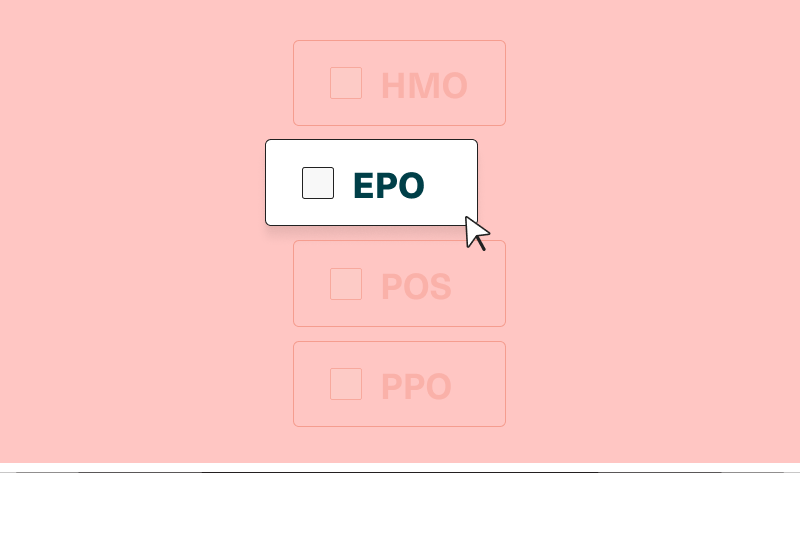Health insurance 101: What is a MEC plan?

Healthcare accessibility is crucial for an engaged and happy workforce. Minimum essential coverage (MEC) is part of the federal legislation that makes good healthcare affordable, but it’s not always easy for employers to understand.
Here’s what business leaders need to know to select the right coverage for their teams.
What is MEC?
The Affordable Care Act (ACA) requires all individuals in the U.S. to have a minimum level of health insurance each month. A MEC plan is health insurance that meets the federal government’s standard for coverage.
As of 2018, individuals no longer face a federal tax penalty for not having coverage, but some state-level mandates still exist. There is also a federal mandate requiring certain employers to offer MEC plans to their employees.
MEC requirements for employers
In the U.S., 48.5% of individuals have health insurance through an employer — or a family member’s employer. Some of those employers are subject to a national mandate to offer a MEC plan, while others provide it voluntarily.
Are employers required to offer MEC to employees?
According to the Internal Revenue Service (IRS), a business must offer MEC plans if they are an applicable large employer (ALE), defined as an employer that had at least 50 full-time or full-time equivalent (FTE) employees in the previous calendar year. FTEs are typically part-time or seasonal employees whose work adds up to one full-time employee.
FTEs are staff hours, not individual people. The IRS defines one FTE as 2,080 hours of work per year — or 40 hours per week for 52 weeks. A business can calculate FTEs by adding up every employee’s total wage hours and dividing by 2,080, then rounding down to the nearest whole number.
For example, if a business has 20 employees working 20 hours per week each for 50 weeks a year, staff members work 20,000 hours that year. Therefore, even though the business has no full-time employees, they have nine FTEs.
However, because that business has fewer than 50 full-time or FTE employees, the IRS would not count them as an ALE.
How much do ACA penalties cost?
The IRS explains the penalty breakdown in a document addressing employer shared responsibility provisions. According to question 53, if an ALE offers coverage to less than 95% of its full-time employees and their dependents, the employer owes a shared responsibility payment.
In total, businesses in this scenario will owe $2,880 per full-time employee — minus the first 30 — for the calendar year. For example, if an employer has 200 employees, they owe (200-30) * $2880, or $489,600.
This rule also applies to ALEs who offer no coverage. The IRS prorates penalties for employers who provide the required coverage for some months of the year.
If the employer owes shared responsibility payments because they did offer coverage, but an employee received a premium tax credit, the calculation happens separately per month.
To calculate the amount owed, multiply the number of employees receiving a premium tax credit for the month by 1/12 of the annual penalty, which is currently $4,320. See question 54 in the IRS’s provisions document for details.
Note that penalty amounts have increased annually since 2014 (according to question 55 of the IRS provisions document). The original per-employee penalties were $2,000 and $3,000 but have increased by 44%.
When do businesses incur ACA penalties?
According to the IRS, (question 43 of the provisions document), the ALE will owe a tax penalty if one of the following applies:
- The business doesn’t offer coverage or offers coverage to less than 95% of their employees
- The business offers coverage, but at least one full-time employee receives a premium tax credit to buy insurance via the Health Insurance Marketplace
The Health Insurance Marketplace is a government-run resource where Americans can shop for and enroll in medical coverage. The federal government runs a national Marketplace, but some states run their own.
A full-time employee might shop the Marketplace if their employer didn’t offer coverage to them. They may also use it if the provided coverage is unaffordable or doesn’t meet the minimum value standard.
What is the difference between minimum value and MEC?
Minimum value is a standard for employer-provided healthcare plans. It says that the plan should cover at least 60% of the total cost of services for a typical individual. Minimum value has a higher threshold for coverage than MEC.
In other words, a MEC plan can meet ACA requirements even if it doesn’t meet minimum value standards. However, if an employer’s offered plan doesn’t provide minimum value, the employee may qualify for a premium tax credit in the Marketplace. The premium tax credit is a refundable amount the federal government allocates to help low- and moderate-income taxpayers afford health insurance. If one or more full-time employees receive it, the business will owe a tax penalty.
Required coverage for a MEC plan
For an insurance plan to qualify as MEC, it must meet all essential requirements of the Public Health Service Act. Those requirements include:
- Fair insurance premiums
- No exclusions for pre-existing conditions
- No discrimination based on health status
- No lifetime or annual coverage limits
- Access to an appeals process for coverage decisions
- A yearly printed summary of benefits
- All essential health benefits
Essential health benefits include:
- Preventive services
- Outpatient care
- Emergency services
- Hospitalization
- Pregnancy and maternity care
- Mental and behavioral health treatment, including addiction therapies
- Prescription drugs
- Rehabilitative care
- Laboratory testing
- Pediatric care, including oral and vision care
New plans must undergo review to determine whether they provide MEC. Existing plans have MEC determinations that insurance companies can share with businesses.
Should non-ALEs offer MEC plans to their employees?
If a business has fewer than 50 full-time or FTE employees, they aren’t subject to employer shared responsibility rules. They won’t pay any penalties for not offering health insurance to full-time employees.
However, offering a high-quality plan is often in an employer’s best interests, regardless of requirements. For example, in a survey of job seekers choosing between a higher-paying job and a job with lower pay but better benefits, 88% considered health coverage in some way — making health insurance the most important factor for surveyed job candidates.
Offering a MEC plan to as many employees as possible can help a business attract and retain top talent. Quality benefits also promote a positive workplace culture by encouraging employees to prioritize their health and overall well-being. Healthy employees are happier, more productive, and more engaged with their jobs.
Choosing a MEC plan for employees
Choosing a plan means finding the right balance between the best offerings and what the business can financially sustain. Follow these critical steps for success.
Options for coverage
There are two basic types of employer-sponsored health coverage. With a fully-funded plan, a business pays a monthly premium to an insurance company. The insurer processes claims from employees and is on the hook to pay out valid claims. This is the best-known option and usually involves working with a large insurer such as UnitedHealthcare or Aetna.
The other option is to offer self-funded insurance. With a self-funded plan, the business sponsors the health plan, putting money into a claims fund that pays out its members’ claims. To protect against unexpectedly high claims, the employer can buy stop-loss insurance. Since the employer isn’t paying an insurer for health plan premiums, they are protected from arbitrary rate hikes.
Assess budget and needs
When businesses offer employer-sponsored health plans, they cover most of the premium, and employees cover the rest. On average, workers with individual plans pay 17% of their premiums, while those with family plans pay 28%.
To account for future growth, business owners should consider what they can afford overall and per employee. They should also think about what premium share employees would be willing to pay and what types and levels of coverage employees would expect. Formal and informal employee healthcare surveys are helpful in gathering such information.
Shop for plans
For businesses selecting MEC insurance for the first time, carrier websites are helpful for beginning research. Businesses with 50 or fewer employees can also shop via the Small Business Health Options Program (SHOP), a government initiative that makes group insurance more affordable for smaller businesses.
It’s important to compare benefits and get quotes, but business owners must also look beyond those basics to what the insurer can offer. For example, what consumer technologies can the insurer provide for the business and employees?
For many small businesses, the most versatile insurer will be the right choice. For example, Sana Benefits offers level-funded plans with flexible options to ensure each business has the coverage they need.
Related: How to Compare Small Business Health Plans
Minimum essential coverage FAQs
Some MEC plans provide minimum value coverage, but not all. Minimum value coverage is at a higher standard than MEC and does not affect a business’s compliance with MEC rules.
If a business has 50 or more full-time or full-time equivalent employees, they must offer a MEC plan to full-timers. ALEs that don’t meet this requirement will pay a tax penalty related to their employee numbers.
Any organization providing MECs must submit coverage information to the IRS, including health insurance companies and businesses that directly cover employees’ healthcare costs.
Providers must submit the name and taxpayer identification number of each covered individual. They must also document each month the employee qualified for and received coverage.






